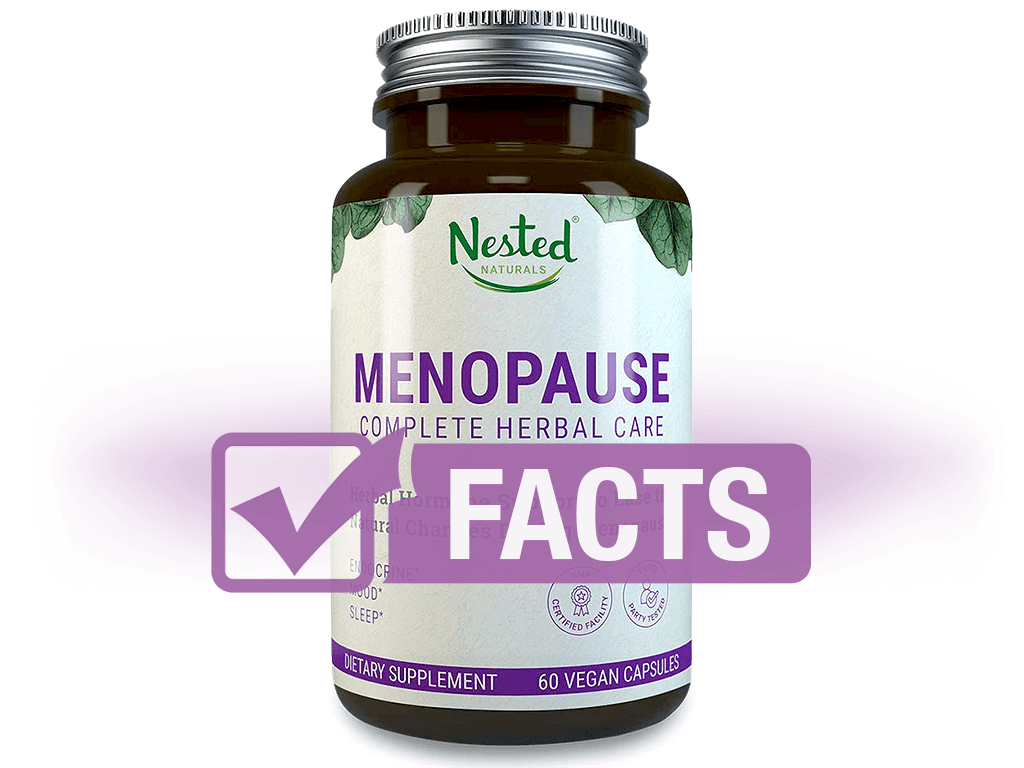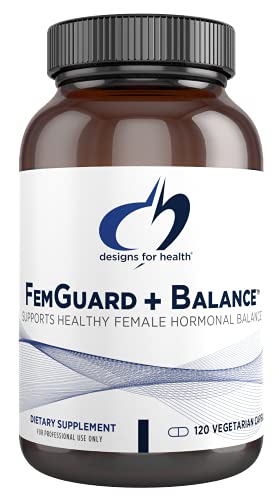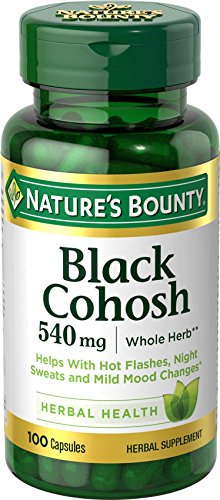nested menopause reviews
Nested Naturals Menopause Care can be purchased from Amazon or through the company website.
Nested Naturals Menopause Care: Complete Information
Nested Naturals Menopause Care includes a blend of four different herbs that work together harmoniously to give women maximum support during perimenopause, relieving many of the discomforts that accompany the transition, such as hot flashes, mood swings, irregular sleeping habits, and headaches.
Last updated 06/2020

BestViewsReviews analyzed 5,032 reviews for 14 products in the Black Cohosh Herbal Supplements
Herb Pharm Certified Organic Black Cohosh Liquid Extract for Female Reproductive System Support – 1 Ounce

Designs for Health FemGuard Balance – Supports Healthy Female Hormonal Balance + Estrogen Metabolism – Womens Formula

Natures Bounty Black Cohosh Root Pills and Herbal Health Supplement, 540 mg, 100 Capsules
Overall BVR Rating
- Contains powerful black cohosh extract that supports a woman's reproductive system
- Contains non-GMO ingredients that makes it safe for consumption
- Rapidly absorbed liquid extract that makes it ideal for all skin types
- Contains classic women's health-supportive herbs in the form of vitex, polygonum and black cohosh
- Contains sulforaphane glucosinolate that helps to boost natural antioxidant capacity and aiding liver cleansing
- Made with non-GMO ingredients that makes it safe for consumption
- Helps to relieve the symptoms of menopause such as hot flashes, night sweats and mild mood changes
- Provides herbal products for a variety of health concerns
- Made of natural ingredients that makes it safe to use
- May cause side effects
- May cause side effects
- May cause side effects
Try before you buy!
You can try items free for 7 days, and pay only for what you keep.
Not a prime member ? Start you free trial

Designs for Health FemGuard.

Natures Bounty Black Cohosh.
Pregnancy Formula For Women, Naturally Promotes Healthy Menstrual Cycles & Increased Energy. Includes Chasteberry and Black Cohosh Root Extract”/>
Progressive Health Fallodox.
Need help? Don’t see what you are looking for?
Let us know and our team will start working on your favorite product or category as soon as possible. Meanwhile let us help you search for them on Amazon.
Need help? Don’t see what you are looking for?
Let us know and our team will start working on your favorite product or category as soon as possible. Meanwhile let us help you search for them on Amazon.
Thanks for your feedback!
LogIn
Sign-Up
Recently Updated
- Note:
- Product prices and availability are accurate as of the date/time indicated and are subject to change. Any price and availability information displayed on [relevant Amazon Site(s), as applicable] at the time of purchase will apply to the purchase of this product.
- Certain content that appears on this site comes from Amazon. This content is provided ‘AS IS’ and is subject to change or removal at any time.
BestViewsReviews recommends the best products using AI-assisted analysis of verified and high-quality reviews, so you can make informed purchase decisions quickly and with confidence!
BestViewsReviews is an ever-expanding catalog of products spanning over a thousand categories. Our team of experts and machine learning algorithms conduct an honest and rigorous analysis of products based on their specifications, features, performance reviews, pros-and-cons and pricing. Shop now and save time and money in buying products you will be happy with!
Earning our audience’s trust is central to what we do. Our team would love to hear from you on any topic. Please e-mail us on [email protected]
Get the latest reviews right in your inbox
Bestviewsreviews. All rights reserved
*Disclaimer: BestViewsReviews earns a commission from qualifying purchases. Learn More
Stay up-to-date
Be the first to get updated on new products.
Thanks for subscribing!
Please add ‘[email protected]’ to your email address book to avoid storing it in spam folder
Login / Signup
Facebook
Google
Evening primrose oil is rich in gamma-linolenic acid, an essential fatty acid involved in the production of hormone-like substances called prostaglandins. By increasing production of prostaglandins, EPO is thought to help counter hormonal changes associated with menopause.
Research
Proponents claim that evening primrose oil can offer relief from a number of menopausal symptoms, such as hot flashes, night sweats, difficulty sleeping, vaginal dryness, and disturbance in mood.
However, there is little scientific support for the theory that evening primrose oil can help treat menopausal symptoms. In fact, the National Institutes of Health (NIH) states that "there’s not enough evidence to support the use of evening primrose oil for any health condition."
While few studies have tested evening primrose oil's effects on women going through menopause, most of the available research has yielded negative findings. For instance, in a review published in American Family Physician in 2009, researchers stated that there is insufficient evidence to determine if evening primrose oil is effective for "most clinical indications" (including symptoms associated with menopause).
In a small study published in Archives of Gynecology and Obstetrics in 2013, women aged 45 to 59 years who were experiencing menopause-related changes took either an evening primrose oil supplement or a placebo for six weeks. At the study's end, there was an improvement in the severity of hot flashes, but not hot flash frequency or duration.
The facts and the tips that follow will help you feel ready and empowered to deal with menopause — and make these years your best yet.
3. You can still have sex — and enjoy it.
“A lot of women feel like sex won’t be as good after menopause or that it will be painful,” Dr. De La Torre says. Sure, waning hormones can leave the vagina naturally drier and less elastic, but you don’t have to live with it or let it kill your sex life any more than you have to live with a headache in the age of ibuprofen.
“Vaginal estrogen inserts, lubricants, and red light therapy can all help improve the health of your vagina and maintain your sex life,” Dr. De La Torre says. Surprisingly, while 50 percent of women experience vaginal dryness and painful sex, as many as 90 percent don’t seek help, reports Harvard Women’s Health Watch. So be like the 10 percent, and talk to your doctor.

Decreased risk of osteoporosis and fractures (broken bones)
The Ups & Downs of Bioidentical Hormones: Everything You Should Know

You may have heard hormone replacement therapy is harmful, yet your doctor says it is safe. You get a second opinion from a naturopath who tells you the only safe hormones are bioidentical hormones made from yams, and she will write you a prescription for a special cream sent to a compounding pharmacy that your insurance doesn't cover. Now you don't know who to believe–was your doctor misinformed?
Your mom told you tell you horror stories of "hormones” causing cancer and strokes yet your best friend tells you hormones brought saved her marriage and her sanity.
You look it up on Google and the information is conflicting.
Hormones are The Fountain of Youth!
Hormones cause breast cancer and strokes!
You don’t know what to believe.
This is part one of a series on perimenopause and menopause that helps you sift through the good, the bad, and the ugly so you can make an informed decision.
At Hearthside Medicine, we want you to be aware of the risks and benefits of all treatments and empower you to make an informed decision. While we lean towards bioidentical hormones over synthetic hormones, it's important to note that hormones are not safe for everyone.
"Bioidentical hormones" (bHRT) certainly has become a BUZZword in the natural health industry and in women's health circles. They are often touted as being "safe and all natural" and "derived from plants."
The North American Menopause Society (NAMS) reports that about 1.4 million women are using bioidentical hormones (bHRT) and that 40% of all prescriptions for menopausal hormone therapy are for bHRT.
Here are some common questions we field at Hearthside Medicine:
Why might I benefit from hormones?
Do hormones cause breast cancer and strokes?
Is bioidentical really all natural?
Can I just use those over the counter menopause supplements?
Are hormones regulated by the FDA to ensure they contain what they say they contain and meet safety standards?
Is one route safer than other routes?
Who should NOT take them?
What side effects do I need to be aware of?
When can I or should I start them and for how long?
What is the difference between a compounded hormone and what I can get at a regular pharmacy?
What can I try instead of hormones for my perimenopause symptoms?
At Hearthside Medicine, we are all about supporting our patients with the safest and most natural options available, so let's run through these questions together!
First, why consider hormones?
Most people start to weigh their options and explore the idea of hormones when they start to experience symptoms of perimenopause or when they undergo a surgery that puts them into immediate menopause (induced menopause/surgical menopause). Others will look first for holistic options and supplements to treat their symptoms (we have an entire blog for that! Check it out: https://www.hearthsidemedicine.com/post/navigating-menopause-with-integrative-medicine
Signs of perimenopause may include some or all of the following:
Insomnia (due to night hot flashes)
Decreased ability to achieve orgasm
Elevation of cholesterol, decrease in good cholesterol (HDL) and increase in bad cholesterol (LDL)
Deregulation of carbohydrate metabolism
Frequent vaginal and urinary infections
Deregulation of thyroid hormone
Perimenopause can start as early as 10 years before menopause, and the average age of menopause is 51–meaning, if you are headed into your 40 or already there, the above symptoms may already be happening.
To better understand what is happening in your body from a physiologic perspective and how low hormones can impact your overall health in depth, read my blog about perimenopause & menopause https://www.hearthsidemedicine.com/post/low-sex-drive-moods-weight-insomnia-it-might-be-perimenopause-sooner-than-you-think
How can taking hormones help me?
Hormone therapy (HT) is a good way to relieve many unwanted symptoms but, as with all medical treatments, it has some risks. The safety of HT depends largely on the age of the patient and any underlying medical conditions they may have (smoking, personal or family history of breast cancer, history of blood clots, etc). Some menopause experts believe non-oral routes of estrogen are also safer as they bypass the liver and thus are associated with fewer blood clots.
For most, the risks are few and the potential benefits are many.
Hormone therapy can benefit you in many aspects of your life. It can help improve sleep, increase energy levels, increase your sex drive (libido), decrease urinary problems, make sex less painful, protect your bones, increase your good cholesterol (the kind we need to combat the bad), help maintain a healthy weight, reduce risk of colon cancer, and in some cases, alleviate depression and/or anxiety.
Some research even suggests a decline in production of hormones can increase your vulnerability to cardiovascular disease and osteoporosis.
What are the risks and benefits of HRT?
In a thorough review of past and current studies, it is painfully apparent that a general lack of consensus persists among providers regarding benefit vs risk of HRT due largely in part to the WHI study of 2002 elaborated above.
According to the North American Menopause Society (2017), contraindications for HT include unexplained vaginal bleeding, severe active liver disease, prior estrogen-sensitive breast or endometrial cancer, coronary heart disease (CHD), stroke, dementia, personal history or inherited high risk of blood clotting disease, porphyria cutanea tarda, or hypertriglyceridemia, with concern that endometriosis might reactivate, migraine headaches may worsen, or leiomyomas may grow.
More common adverse effects include nausea, bloating, weight gain, fluid retention, mood swings (progestogen-related), breakthrough bleeding, headaches, and breast tenderness.
Potential risks of HT initiated in women aged younger than 60 years or who are within 10 years of menopause onset include the possible risk of breast cancer with combined EPT, endometrial hyperplasia and cancer if estrogen is unopposed or inadequately opposed, venous thromboembolism (VTE), and biliary issues. Additional risks across ages include myocardial infarction (MI), stroke, and dementia.
Benefits of hormone replacement therapy are believed by many providers to include the following:
Increased elasticity of the blood vessels, allowing them to dilate (widen) and let the blood flow more freely throughout the body
Improved short-term symptoms of menopause such as hot flashes and mood swings, as well as vaginal dryness, dry skin, sleeplessness and irritable bladder symptoms
Decreased risk of osteoporosis and fractures (broken bones)
Decreased incidence of colon cancer
Possible decreased incidence of Alzheimer’s disease (data not conclusive)
Possible improvement of glucose levels
The health risks of HRT include:
Increased risk of endometrial cancer (only when estrogen is taken without progestin) For those who have had a hysterectomy (removal of the uterus), this is not a problem
Increased risk of breast cancer with long-term use or depending on age
Possible Increased risk of cardiovascular disease (including heart attack) with long-term use
Increase in inflammatory markers (such as C-reactive protein)
Increased risk of blood clots and stroke in susceptible patient (obese patients, those who smoke, those with history of clots)
All those taking hormone replacement therapy should have regular gynecological exams (including a PAP smear). The American Cancer Society also recommends that those over age 50 should:
Perform breast self-examination once a month
Have a breast physical examination by health care provider once a year (we are happy to do that for you as part of your annual wellness exam)
Have a mammogram once a year

Heart attacks — The risk of having a heart attack related to use of hormone therapy appears to depend on your age. According to the landmark 2002 WHI study, there is no increased risk of heart attacks related to hormone therapy in women who:
●Became menopausal less than 10 years before starting hormones
●Were age 50 to 59 years when they took hormone therapy
Other studies since the WHI also report that hormone therapy does not increase heart attack risk in younger women; some suggest it might even lower the risk slightly. In the WHI, women who become menopausal more than 10 years ago or over age 60 years were at increased risk of having a heart attack related to hormone therapy.
Breast cancer — In the aforementioned WHI study using synthetic hormones primarily in those over 60, there was a small increased risk of breast cancer in those who took combined estrogen-progestin therapy but not in women who took estrogen alone. Those with a uterus must take progesterone with estrogen to prevent endometrial cancer. Those without a uterus can safely take estrogen alone. Again, this breast cancer data is based on the WHI study which primarily examined those older than 60 using synthetic, oral hormones. Now, we are encouraging patients to start younger, stop sooner, consider using bio-identical hormones, and consider using non-oral routes.
Osteoporotic fracture —

The risk of breaking a bone at the hip or spine because of osteoporosis is lower in women who take estrogen-progestin or estrogen alone. However, currently hormone therapy is not recommended by menopause experts to prevent or treat osteoporosis, because there are bone medicines (called bisphosphonates ) that are very effective and have fewer serious risks. That being said, being on HRT will certainly help preserve bone strength. Other ways to minimize risk of osteoporosis includes weight lifting, taking calcium citrate 1200-1500 mg with magnesium and vit D, running, maintaining a healthy weight, not smoking. avoiding too many substances that leach calcium from the bones such as coffee and carbonated beverages.
Dementia — Among the older women studied in the WHI, there was no improvement in memory or thinking with either estrogen alone or with combined estrogen-progestin but there was an increase in the risk of developing dementia. No increase in dementia risk was seen in the younger menopausal women in the WHI or in other studies.
Some experts think that estrogen treatment might be helpful for preventing dementia if you take it in the earliest years after menopause (although this is not proven); taking it many years after menopause seems to be harmful.
Depression —
Many women experience anxiety and/or depression during the transition to the menopause. Some studies show that estrogen treatment helps improve mood and decrease depression. However, some women need to be treated with both estrogen and an antidepressant to feel completely better.
Will HT bring my periods back?
To avoid monthly bleeding you will use estrogen and progesterone daily, continuously. Some have breakthrough bleeding (irregular spotting or bleeding) with the continuous regimen, perhaps due to differences in uterine anatomy or fluctuations in the body’s natural estrogen production. A common solution to eliminate bleeding is a progestin containing intrauterine device (IUD), such as Mirena.
Does HT cause weight gain?
Many people have weight gain at about the same time they begin HT due to changing hormone levels, so they believe that HT is the reason for weight gain. In reality, statistics show that over time, those using HT after menopause have less weight gain than those not using HT. A very will have fluid retention with HT, but this is not common. Weight gain is part of normal physiology of aging. Metabolism slows down during perimenopause, so one’s weight will increase if the same caloric intake and same level of exercise is maintained. One way to increase your metabolic rate is to add muscle-building to your exercise routine. Muscle tissue burns more calories than other tissues, even at rest. Some people experience improvement in muscle mass and reduction of subcutaneous fat when testosterone supplementation is included as part of their hormone replacement regimen.
Monitoring and Follow-up After initiation of HT
When we initiate hormone therapy for our patients, we generally require follow-up visits and lab levels be scheduled at 4-6 weeks, 3 months, 6 months, and then annually if remaining stable.
Many people require at least a follow-up visits to adjust hormone dosage before satisfaction is achieved.
After that, yearly visits are usually sufficient.
Blood tests are sometimes indicated, but not always. If testosterone or thyroid medication is given, blood levels are especially important. Some sources claim that saliva testing is a good way to monitor hormone levels, but there is no scientific data to support this practice in monitoring ovarian hormone levels. The best indicator that you are using the correct dose of estrogen and progesterone is that your symptoms are controlled and you have no side effects.
How are bioidentical hormones different than synthetic hormones? Are they safer?
Shumaker SA, Legault C, Rapp SR, et al. Estrogen plus progestin and the incidence of dementia and mild cognitive impairment in postmenopausal women: The Women’s Health Initiative Memory Study: A randomized controlled trial. JAMA 2003; 289(20):2651–2662.
Menopausal Hormone Therapy and Cancer
Menopausal hormone therapy (MHT)—also called postmenopausal hormone therapy and hormone replacement therapy—is a treatment that doctors may recommend to relieve common symptoms of menopause and to address long-term biological changes, such as bone loss, that result from declining levels of the natural hormones estrogen and progesterone in a woman’s body during and after menopause.
MHT usually involves treatment with estrogen alone or estrogen plus progestin, a synthetic hormone whose effects are similar to those of progesterone.
Women who have a uterus—that is, who have not had a hysterectomy—are generally prescribed estrogen plus progestin for MHT. This is because estrogen alone is associated with an increased risk of endometrial cancer, but estrogen plus progestin is not. Estrogen is used alone only in women who have had a hysterectomy.
How do the hormones used in MHT differ from the hormones produced by a woman’s body?
The hormones used in MHT come from a variety of plants and animals, or they can be made in a laboratory. The chemical structure of these hormones is similar, although usually not identical, to those of hormones produced by women’s bodies.
Non-FDA-approved hormone products, sometimes referred to as “bio-identical hormones,” are widely promoted and sold without a prescription on the Internet. Claims that these products are “safer” or more “natural” than FDA-approved hormonal products are not supported by credible scientific evidence. The FDA provides more information about these products on its Menopause page.
Where does evidence about the health effects of MHT come from?
The most comprehensive evidence about the health effects of MHT comes from two randomized clinical trials that were sponsored by the National Institutes of Health as part of the Women’s Health Initiative (WHI):
- The WHIEstrogen-plus-Progestin Study, in which women with a uterus were randomly assigned to receive either a hormone pill containing both estrogen and progestin (Prempro™) or a placebo. The median duration of treatment was 5.6 years.
- The WHI Estrogen-Alone Study, in which women without a uterus were randomly assigned to receive either a hormone pill containing estrogen alone (Premarin™) or a placebo. The median duration of treatment was 7.2 years.
More than 27,000 healthy women who were 50 to 79 years of age at the time of enrollment took part in the WHI hormone therapy trials. The goals of these trials were to see if MHT prevents heart disease and bone fractures in postmenopausal women and to determine if MHT affects risks of breast cancer and, for women with a uterus, endometrial cancer. Both trials were stopped early (in 2002 and 2004, respectively), when it was determined that both types of therapy were associated with specific health risks, but long-term follow up of the participants continues to provide new information about the health effects of MHT.
What are the health effects of MHT?
Research has shown that MHT is associated with the following health effects:
- Hip and vertebral fractures. Women who took estrogen alone or estrogen plus progestin had a lower risk of hip and vertebral fractures than women who took placebo (1, 2). In both cases the benefit disappeared after the women were no longer taking hormone therapy (3, 4).
- Vaginal bleeding. Women who took estrogen plus progestin had more vaginal bleeding that required assessment by endometrial biopsy than women who took placebo (5).
- Urinary incontinence. Women who took estrogen alone or estrogen plus progestin had an increased risk of urinary incontinence (1, 6).
- Dementia. Among women age 65 and older, those who took estrogen alone or estrogen plus progestin had an increased risk of developing dementia (7, 8).
- Stroke, blood clots, and heart attack. Women who took either combined hormone therapy or estrogen alone had an increased risk of stroke, blood clots, and heart attack (1, 2). For women in both groups, however, this risk returned to normal levels after they stopped taking the medication (3, 4).
- Breast cancer. Women who took estrogen alone had a lower risk of breast cancer than women who took placebo (2). After nearly 11 years of follow-up, the risk of breast cancer among women who took estrogen alone remained lower than that among women who took placebo (4).
Women who took estrogen plus progestin were more likely to be diagnosed with breast cancer than women who took placebo (9). The breast cancers in these women were larger and more likely to have spread to the lymph nodes by the time they were diagnosed (9). The risk of breast cancer was greater the longer women took the combined hormone therapy, but it decreased markedly when hormone use stopped (10).
These studies also showed that both combination and estrogen-alone hormone use made mammography less effective for the early detection of breast cancer (9, 11). Women taking hormones needed more repeat mammograms to check on abnormalities found in a screening mammogram and more breast biopsies to determine whether abnormalities detected in mammograms were cancer (9, 11).
An ancillary study of the WHI showed that use of combination hormone therapy was associated with increases in the amount of dense breast tissue seen on a mammogram (12). Dense breasts are a risk factor for breast cancer. The results of a case–control study nested within the WHI showed that the increase in mammographic density in the first year after women started taking estrogen plus progestin accounted for all of the subsequent increase in their breast cancer risk (13).
Women who took estrogen alone had the same risk of colorectal cancer and stage of disease at diagnosis as women who took placebo (2).
Do local formulations of menopausal hormone therapy have different risks?
Both systemic and local treatment options for MHT are available in the United States. Which option a woman receives depends on the menopausal symptoms the treatment is meant to address. Systemic MHT is usually prescribed to treat hot flashes and to prevent osteoporosis. Systemic MHT with combined estrogen plus progestin or with estrogen alone can be given as oral medications; as transdermal patches, gels, or sprays; and as implants.
Local MHT is prescribed to treat genitourinary symptoms such as vaginal dryness. Local MHT contains low-dose estrogen only and is prescribed to women regardless of their hysterectomy status. Local (intravaginal) MHT with low-dose estrogen alone includes creams, tablets (pessaries), and rings.
Findings from the Women’s Health Initiative Observational Study showed that, among women with an intact uterus, those who used vaginal estrogen and those who didn’t had similar risks of stroke, invasive breast cancer, colorectal cancer, endometrial cancer, and pulmonary embolism/deep vein thrombosis (19).
Is it safe for women who have had a cancer diagnosis to take MHT?
One of the roles of naturally occurring estrogen is to promote the normal growth of cells in the breast and uterus. Some cancers also use estrogen to promote their growth. Thus, it is generally believed that MHT may promote further tumor growth in women who have already been diagnosed with breast cancer. However, studies of MHT use in breast cancer survivors have produced conflicting results, with some studies showing an increased risk of breast cancer recurrence (20, 21) and others showing no increased risk of recurrence (22, 23).
What should women do if they have menopausal symptoms but are concerned about taking MHT?
Women who are seeking relief from hot flashes and vaginal dryness should talk with their health care provider about whether to take MHT, the possible risks of using MHT, and what alternatives may be appropriate for them. FDA currently advises women to use MHT for the shortest time and at the lowest dose possible to control menopausal symptoms. The FDA provides additional information about the risks and benefits of MHT use for menopausal symptoms on its Menopause & Hormones: Common Questions fact sheet.
Are there alternatives for women who choose not to take menopausal hormone therapy?
Women who are concerned about the changes that occur naturally with the decline in hormone production that occurs during menopause can make changes in their lifestyle and diet to reduce the risk of certain health effects. For example, eating foods that are rich in calcium and vitamin D or taking dietary supplements containing these nutrients may help to prevent osteoporosis. FDA-approved drugs such as alendronate (Fosamax ® ), raloxifene (Evista ® ), and risedronate (Actonel ® ) have been shown in randomized trials to prevent bone loss.
Medications approved by the FDA for treating depression and seizures may help to relieve menopausal symptoms such as hot flashes (24). Drugs that have been shown in randomized clinical trials to be effective in treating hot flashes include venlafaxine (Effexor ® ), desvenlafaxine (Pristiq ® ), paroxetine (Paxil ® ), fluoxetine (Prozac ® ), citalopram (Celexa ® ), gabapentin (Neurontin ® ), and pregabalin (Lyrica ® ).
Some women seek relief from menopausal symptoms with complementary and alternative therapies. Some of these remedies contain phytoestrogens, which are estrogen-like compounds derived from plant-based sources such as soy products, whole-grain cereals, oilseeds (primarily flaxseed), legumes, or black cohosh. A systematic review and meta-analysis of randomized clinical trials found that some phytoestrogen-containing therapies were associated with modest reductions in the frequency of hot flashes and vaginal dryness but no reduction in the number of night sweats, compared with placebo or no treatment (25). According to the National Center for Complementary and Integrative Health, there is little information on the long-term safety of the use of natural products for menopausal symptoms, and some can have harmful side effects or interact with other drugs a woman may be taking.
What questions remain in this area of research?
The WHI trials were landmark studies that have transformed our understanding of the health effects of MHT. It’s important to note that women who were enrolled in the WHI trials were, on average, 63 years old, although about 5,000 of them were under age 60, so the results of the study may also apply to younger women. In addition, the WHI trials tested single-dose strengths of one estrogen-only medication (Premarin) and one estrogen-plus-progestin medication (Prempro).
Follow-up studies have expanded and refined the original findings of these two trials. But many questions remain to be answered:
- Are different forms of hormones, lower doses, different hormones, or different methods of administration safer or more effective than those tested in the WHI trials?
- Are the risks and benefits of MHT different for younger women than for those studied in the WHI trials?
- Is there an optimal age at which to initiate MHT or an optimal duration of therapy that maximizes benefits and minimizes risks?
Where can people get more information about MHT?
The following resources provide additional information about menopausal hormones and the WHI:
- NIH Menopausal Hormone Therapy Information home page page
- National Center for Complementary and Integrative Health: Menopausal Symptoms: In Depth page
Selected References
Rossouw JE, Anderson GL, Prentice RL, et al. Risks and benefits of estrogen plus progestin in healthy postmenopausal women: principal results from the Women’s Health Initiative randomized controlled trial. JAMA 2002; 288(3):321–333.
Anderson GL, Limacher M, Assaf AR, et al. Effects of conjugated equine estrogen in postmenopausal women with hysterectomy: The Women’s Health Initiative randomized controlled trial. JAMA 2004; 291(14):1701–1712.
Heiss G, Wallace R, Anderson GL, et al. Health risks and benefits 3 years after stopping randomized treatment with estrogen and progestin. JAMA 2008; 299(9):1036–1045.
LaCroix AZ, Chlebowski RT, Manson JE, et al. Health outcomes after stopping conjugated equine estrogens among postmenopausal women with prior hysterectomy: a randomized controlled trial. JAMA 2011; 305(13):1305–1314.
Anderson GL, Judd HL, Kaunitz AM, et al. Effects of estrogen plus progestin on gynecologic cancers and associated diagnostic procedures: The Women’s Health Initiative randomized trial. JAMA 2003; 290(13):1739-1748.
Hendrix SL, Cochrane BB, Nygaard IE, et al. Effects of estrogen with and without progestin on urinary incontinence. JAMA 2005; 293(8):935-948.
Shumaker SA, Legault C, Rapp SR, et al. Estrogen plus progestin and the incidence of dementia and mild cognitive impairment in postmenopausal women: The Women’s Health Initiative Memory Study: A randomized controlled trial. JAMA 2003; 289(20):2651–2662.
Shumaker SA, Legault C, Kuller L, et al. Conjugated equine estrogens and incidence of probable dementia and mild cognitive impairment in postmenopausal women: Women’s Health Initiative Memory Study. JAMA 2004; 291(24):2947-2958.
Chlebowski RT, Anderson G, Pettinger M, et al. Estrogen plus progestin and breast cancer detection by means of mammography and breast biopsy. Archives of Internal Medicine 2008; 168(4):370–377.
Chlebowski RT, Kuller LH, Prentice RL, et al. Breast cancer after use of estrogen plus progestin in postmenopausal women. New England Journal of Medicine 2009; 360(6):573–587.
Chlebowski RT, Anderson G, Manson JE, et al. Estrogen alone in postmenopausal women and breast cancer detection by means of mammography and breast biopsy. Journal of Clinical Oncology 2010; 28(16):2690–2697.
McTiernan A, Martin CF, Peck JD, et al. Estrogen-plus-progestin use and mammographic density in postmenopausal women: Women’s Health Initiative randomized trial. Journal of the National Cancer Institute 2005; 97(18):1366-1376.
Byrne C, Ursin G, Martin CF, et al. Mammographic density change with estrogen and progestin therapy and breast cancer risk. Journal of the National Cancer Institute 2017; 109(9). doi: 10.1093/jnci/djx001.
Chlebowski RT, Anderson GL, Gass M, et al. Estrogen plus progestin and breast cancer incidence and mortality in postmenopausal women. JAMA 2010; 304(15):1684–1692.
Manson JE, Aragaki AK, Rossouw JE, et al. Menopausal hormone therapy and long-term all-cause and cause-specific mortality: The Women’s Health Initiative Randomized Trials. JAMA 2017; 318(10):927-938.
Chlebowski RT, Schwartz AG, Wakelee H, et al. Oestrogen plus progestin and lung cancer in postmenopausal women (Women’s Health Initiative trial): a post-hoc analysis of a randomised controlled trial. Lancet 2009; 374(9697):1243–1251.
Chlebowski RT, Anderson GL, Manson JE, et al. Lung cancer among postmenopausal women treated with estrogen alone in the Women’s Health Initiative randomized trial. Journal of the National Cancer Institute 2010; 102(18):1413–1421.
Prentice RL, Pettinger M, Beresford SA, et al. Colorectal cancer in relation to postmenopausal estrogen and estrogen plus progestin in the Women’s Health Initiative clinical trial and observational study. Cancer Epidemiology, Biomarkers & Prevention 2009; 18(5):1531–1537.
Crandall CJ, Hovey KM, Andrews CA, et al. Breast cancer, endometrial cancer, and cardiovascular events in participants who used vaginal estrogen in the Women’s Health Initiative Observational Study. Menopause 2018; 25(1):11-20.
Holmberg L, Anderson H. HABITS (hormonal replacement therapy after breast cancer―is it safe?), a randomised comparison: trial stopped. Lancet 2004; 363(9407):453–455.
Holmberg L, Iversen OE, Rudenstam CM, et al. Increased risk of recurrence after hormone replacement therapy in breast cancer survivors. Journal of the National Cancer Institute 2008; 100(7):475–482.
von Schoultz E, Rutqvist LE. Menopausal hormone therapy after breast cancer: The Stockholm randomized trial. Journal of the National Cancer Institute 2005; 97(7):533–535.
Batur P, Blixen CE, Moore HC, Thacker HL, Xu M. Menopausal hormone therapy (HT) in patients with breast cancer. Maturitas 2006; 53(2):123–132.
Pachman DR, Jones JM, Loprinzi CL. Management of menopause-associated vasomotor symptoms: Current treatment options, challenges and future directions. International Journal of Women’s Health 2010; 2:123–135.
Franco OH, Chowdhury R, Troup J, et al. Use of plant-based therapies and menopausal symptoms: A systematic review and meta-analysis. JAMA 2016; 315(23):2554-2563.